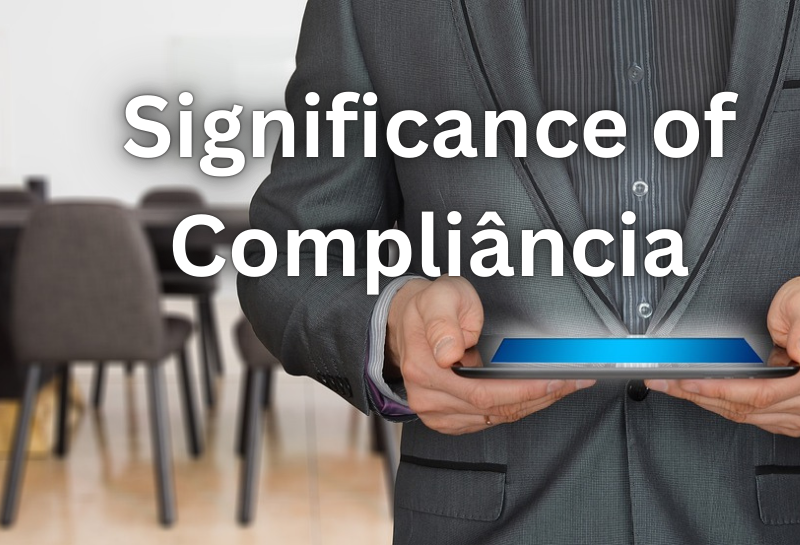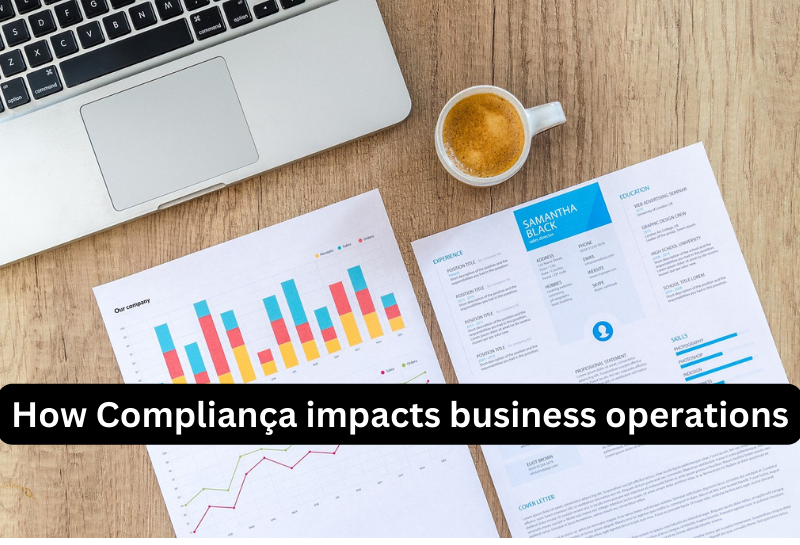Introduction:
Running a successful business involves doing things the right way, and one important part of that is called compliância. Compliância means following the rules and laws that tell a company how to work. These rules are like a guidebook for businesses, and they help make sure everything is fair and safe.
If a company doesn’t follow these rules, it can get into trouble. There can be serious consequences, like having to pay fines or losing a good reputation. In this article, we will learn more about why it’s important for businesses to follow the rules and how they can do it well. We’ll also talk about the different ways compliância is important in different types of businesses and some important things businesses can do to make sure they are following the rules.
In the broadest sense, compliance means adherence to rules and regulations of external authorities. In a business context, compliance requirements can vary depending on the industry, region and type of operation. It covers a wide range of areas such as labor law, data protection regulations, environmental standards, financial reporting requirements, etc.
Read more:A New Platform for Comic Book Fans: Ilimecomix.
Significance of Compliância:

Understanding the true meaning of compliância goes beyond simple knowledge. It is about recognizing that ethical behavior and respect for rules promote trust and credibility, both in professional and personal life. Compliância is not just a set of procedures; It is an organizational culture where compliance, ethics and integrity are promoted at all levels.
Regulatory Landscape:
The regulatory landscape is constantly evolving. As businesses, technologies and practices evolve, new industrial rules and regulations are introduced. Compliance with these regulations ensures that an organization remains in good standing with regulators, avoids legal sanctions, and maintains its reputation.
Trust between stakeholders:
Compliância builds trust between stakeholders. When companies prioritize and maintain best practices, stakeholders, from employees to shareholders to customers, increase trust in the company.
Mitigate risks:
Effective compliance programs helps identify potential risks and put controls in place to ensure those risks are mitigated. Regular audits and reviews also ensure that business operations meet established standards.
Key elements of compliance
An effective compliance program includes several key elements that companies should consider to ensure complete compliance. These elements include:
Written Policies and Procedures:
Establish clear policies and procedures that outline compliance expectations for employees and provide guidelines for decision making. These policies should be regularly reviewed and updated to reflect changes in laws and regulations.
Internal controls:
Implement internal controls, such as segregation of duties, regular audits and risk assessments, to monitor and detect compliance violations. Internal controls help companies identify weaknesses in their compliance processes and take corrective actions.
Training and education:
Provide regular training programs to educate employees about compliance requirements, ethical behavior and the consequences of non-compliance. Training should be tailored to different roles within the organization and cover topics such as anti-corruption, data protection and conflicts of interest.
Monitoring and reporting:
Establish mechanisms to monitor compliance activities, report potential violations, and promptly resolve any non-compliance issues. This includes establishing whistleblower hotlines, conducting internal investigations and maintaining a culture of reporting and transparency.
Enforcement and discipline:
Apply consistent discipline to non-compliant behavior, rewarding and recognizing employees who demonstrate compliance. Organizations must have a clear and fair disciplinary process, which may include warnings, suspensions or dismissal.
Continuous Improvement:
Regularly evaluate and improve your compliance program based on feedback, incident information, and regulatory changes. This includes carrying out regular risk assessments, benchmarking against industry best practices and working with external experts to ensure the program remains effective.
How Compliança impacts business operations

Compliança has a direct impact on various aspects of the company’s operations. From the supply chain to customer relationships, here are the impacts on key areas:
Supply chain management
Compliança guarantees that products and materials comply with safety and quality standards. It also addresses environmental concerns by ensuring responsible sourcing and production.
Customer relationships
Compliança can increase customer trust. When customers know that a company uses ethical practices, they are more likely to support and recommend it.
Risk management
Compliança is a central element of risk management. It helps identify and mitigate potential risks, thereby reducing the likelihood of legal problems.
Financial stability
By complying with financial regulations, companies can maintain their financial stability and gain easier access to financing.
Read more: A Guide to Craigslist Wilmington, NC: Revealing the Details
Compliance trends to keep an eye on
Several compliance trends are gaining momentum and will likely shape the future of compliance practices. These include:
Focus on data protection:
With the increasing focus on protecting personal data, companies are faced with stricter data protection regulations. Companies must ensure that the collection, storage and processing of customer data complies with data protection laws.
Sustainability and environmental impact:
Attention to sustainability and environmental responsibility is increasing. Companies must comply with environmental regulations, reduce their carbon footprint and adopt sustainable practices.
Tightened cybersecurity regulations:
Increasing cyber threats and data breaches have led to stricter cybersecurity regulations worldwide. Companies must invest in robust cybersecurity measures and comply with data protection laws.
Global harmonization of compliance standards:
Cross-border harmonization of compliance standards is on the rise. Companies operating in multiple jurisdictions will face complex compliance requirements to maintain global operations.
Leveraging these trends and adapting to the changing compliance landscape will be critical to companies’ future success.
Technological Advances in Compliance
The emergence of technologies such as artificial intelligence (AI), machine learning and data analytics has changed the compliance landscape. These tools allow businesses to automate compliance processes, identify patterns, and proactively identify potential compliance violations.
AI-powered solutions can analyze large amounts of data, provide real-time insights, and improve risk assessments. Robotic process automation (RPA) streamlines compliance workflows, reduces manual errors, and increases efficiency.
Compliance and Corporate Governance
Corporate governance is the set of rules, practices and processes that govern the management and control of a company. Compliance plays a crucial role in ensuring good corporate governance. It promotes transparency, accountability and responsible decision-making and fosters trust among shareholders, employees and other stakeholders.
Additionally, compliance helps organizations create a framework for ethical behavior. By adhering to compliance requirements, businesses can create a culture of honesty, fairness and respect. This, in turn, increases the reputation of the organization and attracts stakeholders who value ethical business practices.
Meeting compliance requirements also helps companies mitigate conflicts of interest, prevent fraud, and establish mechanisms to identify and address unethical behavior. With clear policies and procedures, companies can ensure that all employees understand their responsibilities and act in the best interests of the organization.
Compliance as a risk management tool

The risk management strategy of an organization must include compliance. By complying with laws and regulations, businesses can identify potential risks and take appropriate steps to mitigate them. Failure to comply with the rules can result in significant financial and reputational risks.
Failure to comply can result in costly litigation, fines, product recalls, damage to brand reputation, loss of customers, and even business closures. These risks can have far-reaching consequences, affecting not only the organization but also its employees, shareholders and the broader community.
A proactive approach to compliance, such as implementing robust internal controls, conducting regular audits and effectively managing compliance risks, allows companies to reduce vulnerabilities and protect their operations from potential threats.
Additionally, compliance helps companies stay one step ahead of new risks. In today’s rapidly evolving regulatory landscape, new laws and regulations are constantly being introduced. By actively monitoring and adapting to these changes, companies can ensure they remain compliant and minimize the impact of regulatory changes on their operations.
In summary, compliance is not just a box to tick; It is a critical aspect of successful business operations. By prioritizing compliance, companies can establish a culture of integrity, improve governance and effectively manage risk. Compliance is not just about avoiding legal consequences, but also about building trust, protecting reputations and ensuring long-term sustainability.
The consequences of non-compliance
Failure to comply with laws, regulations and industry standards can have serious consequences for businesses. Let’s investigate a few of the major effects:
Legal consequences of non-compliance
If a company fails to comply with applicable laws, it may face legal action from regulators, customers, employees or other interested parties. Legal consequences may include fines, penalties, prosecutions and regulatory sanctions. The impact of non-compliance can be significant, particularly for small and medium-sized enterprises (SMEs), as they may not have the resources to fight lengthy litigation.
Additionally, failure to comply can damage a company’s reputation and undermine consumer confidence, leading to the loss of long-term business opportunities.
Financial and reputational risks
Non-compliance presents significant financial risks for businesses. Legal fees, fines and possible settlements can put a strain on business finances. Additionally, non-compliance can lead to operational disruptions, production delays or costly product recalls.
Reputational damage is another significant risk associated with non-compliance. Negative publicity due to compliance violations can damage a company’s image and impact brand value. Customers are more likely to trust and support companies committed to compliance and ethical behavior.
Conclusion
In summary, Compliância is much more than a simple set of rules; It is the cornerstone of responsible and ethical business behavior. It shapes the way companies work, interact with stakeholders and contribute to society. In today’s complex and regulated business landscape, compliance is not just a choice, but a necessity. Whether you’re a small startup or a multinational company, it’s time to prioritize compliance to protect your reputation, mitigate risk, and thrive in a competitive business world.
Compliance is an essential aspect of running a successful company. This includes complying with each organization’s specific laws, regulations and industry standards. Compliance plays an important role in corporate governance, risk management and overall business operations, promoting accountability, transparency and ethical behavior. Failure to comply may result in serious legal, financial and reputational risks.





[…] Raed More :”Compliância: Understanding the Value of Compliance” […]
[…] Raed More :”Compliância: Understanding the Value of Compliance” […]